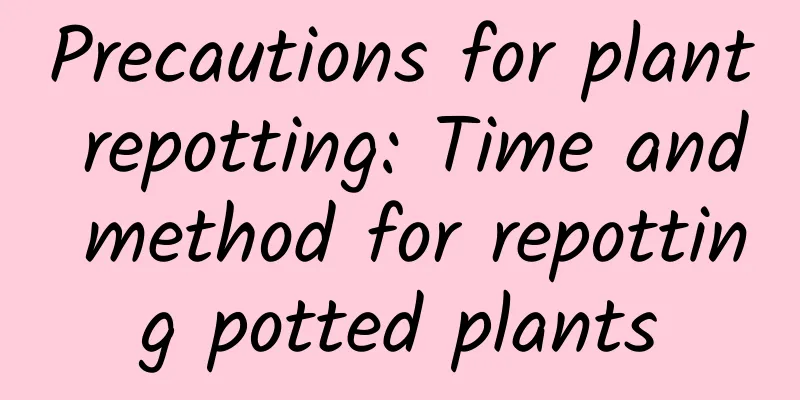When is the right time to transplant onions?

|
Onion is an ancient plant native to Southwest Asia with a long history and wide range of uses. It was introduced into my country during the Western Han Dynasty and spread to the world after the Age of Discovery. Onions are rich in nutrients, good for health, and widely grown. So when is the best time to transplant onions? Let’s take a look below. 1. When is the best time to transplant onions? The best time to transplant onions usually depends on several factors, including climate, soil conditions, and the onion's growth stage. Generally speaking, it is best to transplant onions when the weather is cool and the soil is moist, so as to ensure that the onion seedlings can take root and grow smoothly. Specifically, when the onion seedlings grow to a certain height (for example, about 10-15 cm) and the weather gradually turns cooler, it is a more appropriate time to transplant them. In addition, make sure the soil after transplanting is fertile and well-drained so that it can provide sufficient nutrients and water for the growth of onions. 2. How to transplant onions? 1. Land preparation and fertilization before transplanting After the previous crop is crushed, the land should be deeply plowed to a depth of 20 cm. When plowing the land, use low gear and high speed. The finer the better. Then apply compound fertilizer as base fertilizer, or use high-potassium potassium sulfate compound fertilizer and spread it evenly on the ground surface. 2. Dip the roots in medicine When transplanting onions, dip the roots in chemicals to prevent diseases, control insects, promote root growth, and promote early growth. Specific method: Soak the roots of the seedling bundle in the medicine solution for a while, then pour off the excess liquid and put it into a plastic box. The liquid medicine formula can be selected from 70% Aimeile (imidacloprid) water dispersible granules 12 grams (4 bags) + 0.01% 28 Gaorongcai 20 ml + 30% Rui Miaoqing (metalxam·carbendazim) aqueous solution 20 ml, to 15 kg of water. 3. Transplantation The transplanting standard is plant and row spacing of 15×16 cm or 16×16 cm. Transplant 8 rows per plot; transplanting depth is 2-3 cm, slightly deeper in sandy soil and slightly shallower in clay soil, just enough to bury the small bulbs; plant about 25,000 plants per mu, varieties with short growing periods are suitable for dense planting, while varieties with long growing periods are suitable for sparse planting; sparse planting is suitable in areas with good water and fertilizer conditions and fertile soil, otherwise dense planting is suitable; when transplanting, the seedlings should be vertical up and down, and not tilted to the left and right. 4. Management after transplanting (1) Check and replant seedlings 3-4 days after transplanting. (2) Depending on the weather and soil moisture conditions, water the plants 3-5 days after transplanting to promote survival. (3) Water the soil shallowly once every 3 days after transplanting the seedlings, and then water it twice every 25 days. After that, water every 10-15 days depending on the temperature. In addition, apply about 65 kg of urea during the entire growth period, combined with the 2nd to 7th watering. 5. Pest and disease control The period from the time when onions are transplanted and the time when the first seedling-promoting water is watered is the time when onion virus diseases are most likely to occur. Thrips, leaf miners and root rot also begin to occur sporadically. We must take into account the characteristics of the disease and do a good job of preventing and treating it with the right medicine. In general, doing a good job of onion transplanting is an effective measure to increase yield. In addition, I would like to remind everyone that when transplanting onion seedlings in spring, the use of mulch can significantly increase onion yield and improve quality. Those who have not used mulch can give it a try.
|
<<: When will spinach be harvested if planted in October?
>>: Egg duck breeding technology and methods
Recommend
When are bananas harvested? Harvest season and time
Banana harvest time Bananas generally mature from...
Diseases and prevention methods of cockscomb
Diseases of Cockscomb: Leaf spot symptom It often...
What flowers are best to grow indoors? What should I pay attention to?
1. What flowers are best to grow? 1. Easy to main...
How often should the fragrant wood be watered? Watering time and method
How often should I water the fragrant wood? When ...
Rabbit breeding techniques
Rabbits have become favorite pets of many people ...
Are daffodils poisonous?
1. Is it toxic? Narcissus is a poisonous plant, a...
How to fertilize Liubeili
Fertilizer selection In the early stage, you can ...
The difference between Buddha's hand and chayote
Different families Chayote belongs to the genus C...
How to water flowers with salt water
Can salt water be used to water flowers? Light sa...
How to transplant the lucky tree to survive, and what to pay attention to after repotting
1. Transplantation Method 1. Prepare the potting ...
How can Ivy grow vigorously (methods and techniques for growing Ivy quickly)
How to grow ivy so that it grows thick and lush A...
When is the right time to repot the fortune tree?
Time to repot the fortune tree Generally, a newly...
How to fertilize the umbrella
Fertilizer selection The umbrella tree will grow ...
Green radish planting methods and precautions
When to plant green radish Pothos can be propagat...
When is the best season to plant Pueraria root?
Kudzu root planting season and time Pueraria root...









